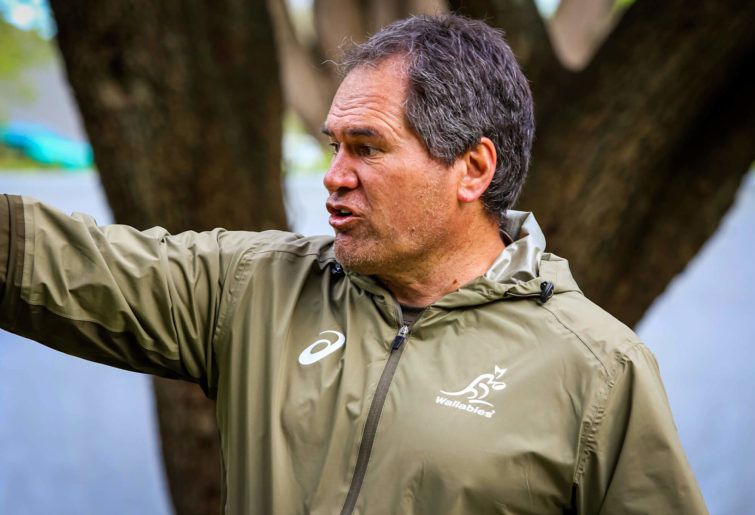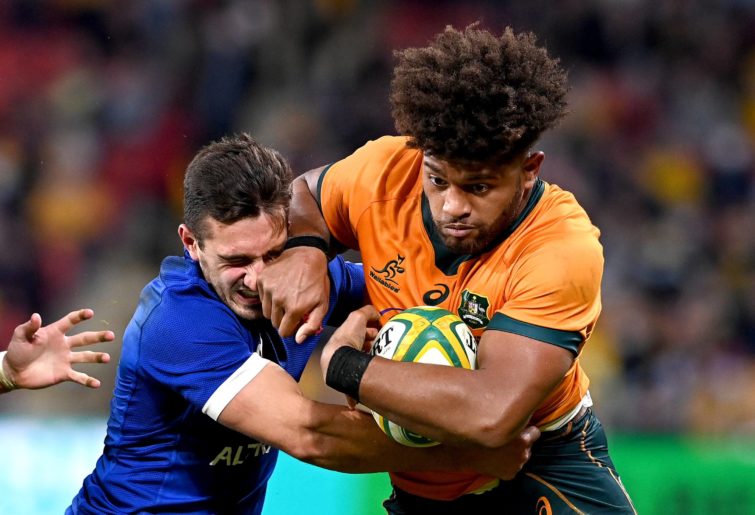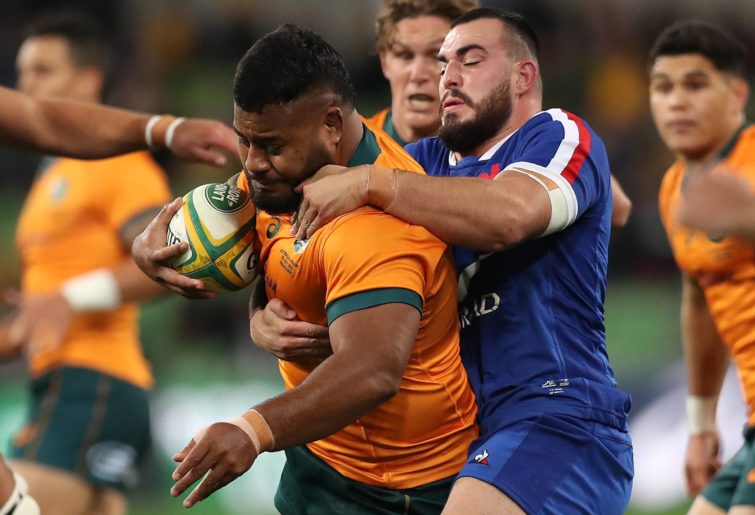Well, the Wallabies are in New Zealand ahead of the first Bledisloe Cup Test, and I must say, it’s a bit surprising we still don’t know where the second match will be played yet.
Of course, there’s good reason for that, and one of very many would be that the Nine Network in Australia is working feverishly with the NRL and several state governments around plans and possibilities and numerous contingencies around how to keep rugby league being played in a rapidly-changing COVID situation in Sydney and Brisbane.
Games being played in other sports, even games little more than a week away, would be down the priority list at the moment, and that would make things difficult for Rugby Australia to gain the clarity they would most certainly need for the rest of the series and The Rugby Championship beyond.
Hopefully, the next week questions are answered soon enough.
This week, on the other hand, raises different kinds of questions that can only be answered on the field with the first match of the series now just days away.
What is the back row strategy?
The team being named later in the week will partly answer this one, but it will be interesting to see which approach Dave Rennie takes into the first Bledisloe on Saturday.

(Andrew Phan/supplied by Rugby Australia)
The Rob Valetini-Michael Hooper-Harry Wilson unit were generally effective in the first two Tests against France, even if by the second game Les Bleus finished well on top of the breakdown ledger. But the unit didn’t survive intact for the third game.
For the third game, Rennie promoted Isi Naisarani from the bench into number eight, left Wilson out completely and then pushed Valetini back to the bench to bring Lachie Swinton in.
It was a clear shift in approach. Valetini’s heavy physicality and Wilson’s wide channel speed was swapped out for Naisarani’s centre corridor presence and Swinton’s work rate, and though it felt a bit curious at the time, the two combined surprisingly effectively with Michael Hooper’s typically productive game.

(Photo by Bradley Kanaris/Getty Images)
A surprising combination in the same way Hooper ‘just worked’ when buddied up with Scott Fardy and David Pocock back in the day.
My strong suspicion is that that third France Test trio will be favoured again, if for no other reason than to lay a physical benchmark for the rest of the series. The Wallabies learned the hard way in Melbourne the folly of playing wide before going forward, and repeating that mistake against New Zealand at Eden Park is a recipe for disaster.
When to bring Taniela Tupou on?
The third match against France seemed to confirm – for now at least – that Taniela Tupou is best suited to coming off the bench for maximum impact, and that Allan Ala’alatoa is very much your starting benchmark setter.
Certainly, Ala’alatoa doesn’t offer anything of the bench impact that Tupou does; he just isn’t wired that way.
But Tupou is, though curiously his numbers from the last two Tests against France are surprisingly comparable from an output point of view. Starting the Second Test and coming off the bench in the Third, Tupou’s minutes-per-carry are remarkably similar. He didn’t make a tackle in the decider, but you’ll recall the Wallabies enjoyed pretty much exclusive possession in the last half an hour.

Getty Images
The difference, of course, is the quality of his involvements and the physicality he imparts on a game. Against tiring forwards nearing the hour mark of a game, the force of a 140kg monster is huge. Ala’alatoa just can’t do that.
So if it’s clear that Ala’alatoa starts, the question then becomes the timeframe in introducing Tupou to the contest.
There’s a train of thought that bringing him on before halftime allows Dave Rennie the chance to double-dip – five or ten minutes of impact before the break, reload and go again for another forty.
I’m not sure that works against New Zealand, though. The All Blacks will know Tupou’s first-contact tackle isn’t always great, and they’ll work him over to blunt his energy level and dampen his impact.
Again, we’ll find this out soon enough, but I suspect the final half-hour will remain the plan for now.
The scrumhalf conundrum
It’s one thing to bring Nic White back into camp because you expect him to be right for the back half of The Rugby Championship, and state lockdowns would prevent a timely late arrival, but is there a chance he could actually be right for this weekend?
He was hopeful rather than confident at a Canberra Stadium announcement back during the France series, but there’s genuine confidence to his tone now: “I’m back training now so fingers crossed I’m able to contribute in some capacity over the next couple of weeks,” he said before the Wallabies left Australia last week.
Certainly, he’s one of those guys who you pick if fit. The underlying question, however, is how fit is fit enough?

(Photo by Hagen Hopkins/Getty Images)
To kick for line or not at all?
Is there enough confidence in the lineout set-piece to remove the threat of backfield All Black counter by simply putting the ball into row B at every opportunity?
Obviously, it held up pretty well against France, but French experience levels may have been a bigger factor in that, given the abundant French talent on show.
But this might yet be the biggest sign of Dan McKellar’s input into the Wallabies coaching set-up. And suddenly, if the Wallabies are more confident about taking on the likes of Sam Whitelock and Brodie Retallick than giving the broken field ball to the All Blacks’ back three, then that really will be a significant step forward.
Are the outsiders about a bigger plan?
This is more around Duncan Paia’aua than Quade Cooper, I’ll admit, but both are certainly curious inclusions in this current Wallabies squad; Paia’aua as a selected squad member, Cooper as an intriguing consultant-type mentor who can still drill blokes 30 metres away while on the run.
What is Dave Rennie really playing at here? Is it a very strong enticement campaign, hoping to get Paia’aua back into one of the Super Rugby sides? Is it the first sign of a weakening of the previously firm stance on overseas-based players? Is it somehow COVID-forced to overcome a lack of available options left in Australia?
And is Paia’aua really in the frame to play this weekend or next?
Again, we’ll find this answer and all the others later in the week.
Original source: https://www.theroar.com.au/2021/08/03/bledisloe-dawn-the-questions-for-the-wallabies-ahead-of-game-1/
https://therugbystore.com.au/bledisloe-dawn-the-questions-for-the-wallabies-ahead-of-game-1/
Comments
Post a Comment